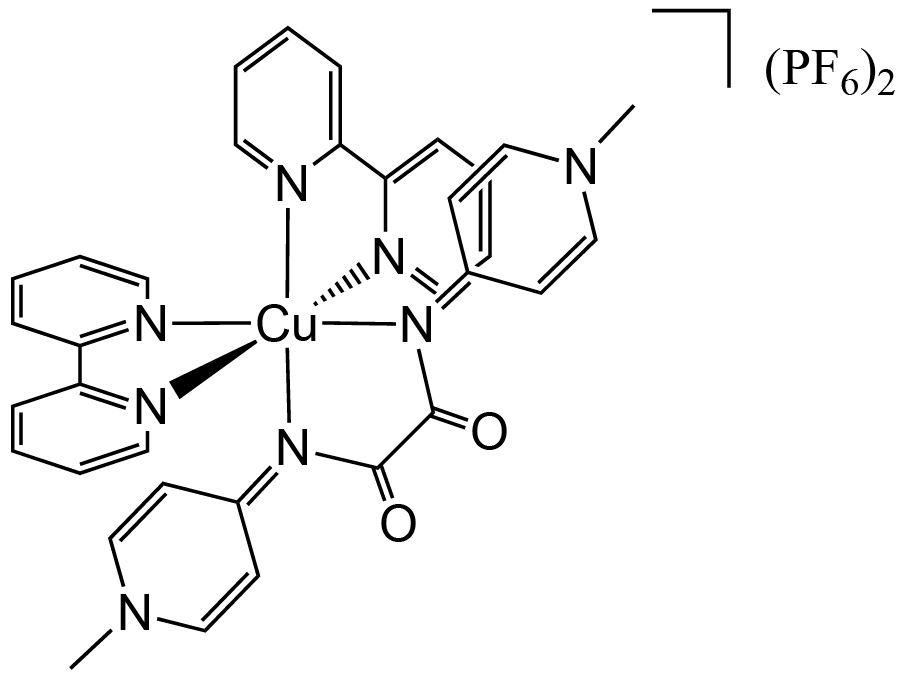Bis-Pyridylidene Amide Ligands for Copper(ii) Photocatalysts
Redox-active ligands play a crucial role for photophysical and catalytic applications. Such noninnocent ligands can display varying degrees of donor ability and may stabilize several intermediates of the catalytic cycle. Pyridylideneamides (PYAs) are an innovative class of flexible ligands who show either a higher contribution of a neutral or a mesoionic resonance structure depending on its environment and are suitable for metal coordination.[1] Recent findings of our group have shown that ligands with two PYA moieties (bis-PYA) may be beneficial over 2,2’-bipyridine (bpy) and its analogues in photophysical and electrochemical applications.[2] Successful coordination of such bis-PYA ligands to second and third row transition metals has already been achieved and we were therefore interested to expanded to first row transition metals. Here we introduce a novel analogue of [Cu(bpy)3]2+ with one bipyridine ligand site substituted by chelating bis-PYA. Photo- and electrochemical measurements and show that the presence of PYA moiety facilitates oxidation processes.

[1] M. E. Doster, S. A. Johnson, Angew. Chem. Int. Ed., 2009, 48, 2185-2187.
[2] K. Salzmann, C. Segarra, M. Albrecht, 2017, Manuscript in preparation